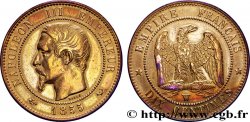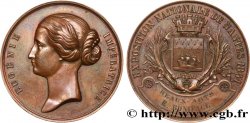E-auction 511-423043 - fmd_754890 - 20 centimes Napoléon III, tête laurée, grand module 1867 Strasbourg F.150/2
You must signin and be an approved bidder to bid, LOGIN TO BID. Accounts are subject to approval and the approval process takes place within 48 hours. Do not wait until the day a sale closes to register. Clicking on « bid » constitutes acceptance of the terms of use of cgb.fr private e-auctions.
Bids must be placed in whole Euro amounts only. The sale will start closing at the time stated on the item description; any bids received at the site after the closing time will not be executed. Transmission times may vary and bids could be rejected if you wait until the last second. For further information ckeck the E-auctions F.A.Q.
NO BUYER'S FEE.
NO BUYER'S FEE.
| Estimate : | 5 € |
| Price : | 7 € |
| Maximum bid : | 10 € |
| End of the sale : | 30 January 2023 15:24:30 |
| bidders : | 3 bidders |
Type : 20 centimes Napoléon III, tête laurée, grand module
Date: 1867
Mint name / Town : Strasbourg
Quantity minted : 3114264
Metal : silver
Millesimal fineness : 835 ‰
Diameter : 16 mm
Orientation dies : 6 h.
Weight : 0,98 g.
Edge : cannelée
Coments on the condition:
Exemplaire nettoyé
Catalogue references :
Obverse
Obverse legend : NAPOLEON III - EMPEREUR.
Obverse description : Tête laurée de Napoléon III à gauche ; signé BARRE au-dessous.
Reverse
Reverse legend : EMPIRE FRANCAIS // 20 CENT. // 1867 BB.
Reverse description : Couronne impériale.








 Report a mistake
Report a mistake Print the page
Print the page Share my selection
Share my selection Ask a question
Ask a question Consign / sell
Consign / sell
 Full data
Full data









